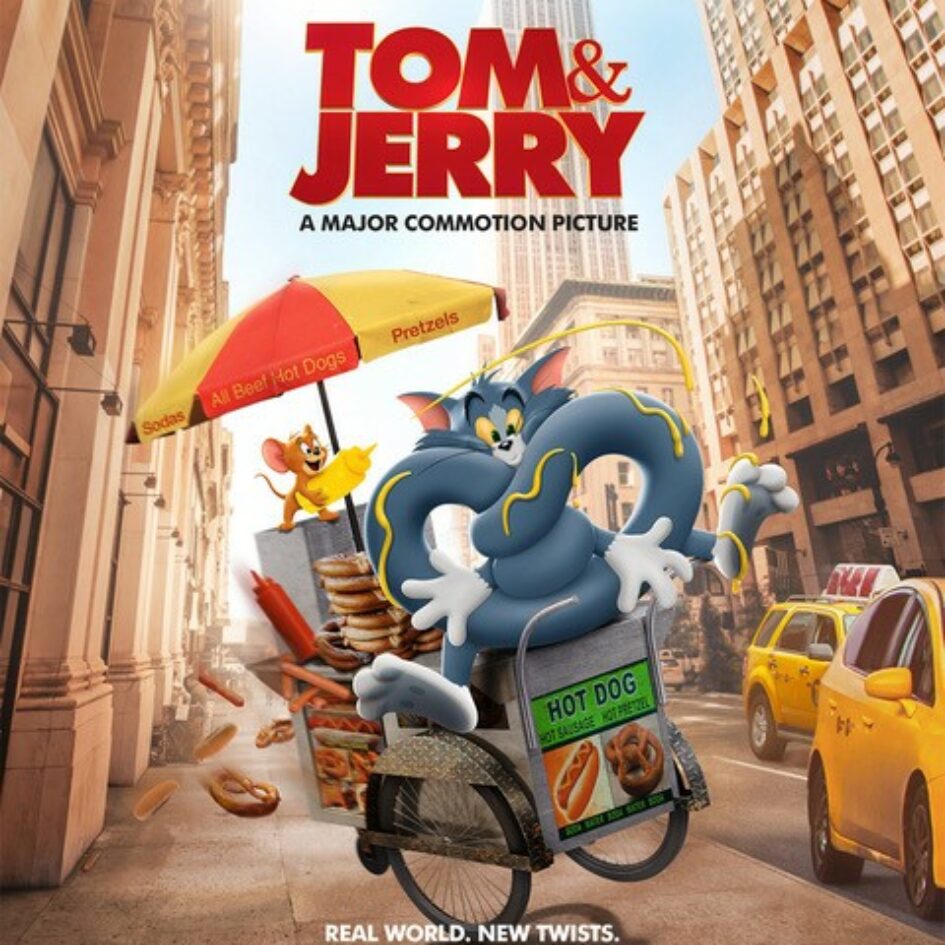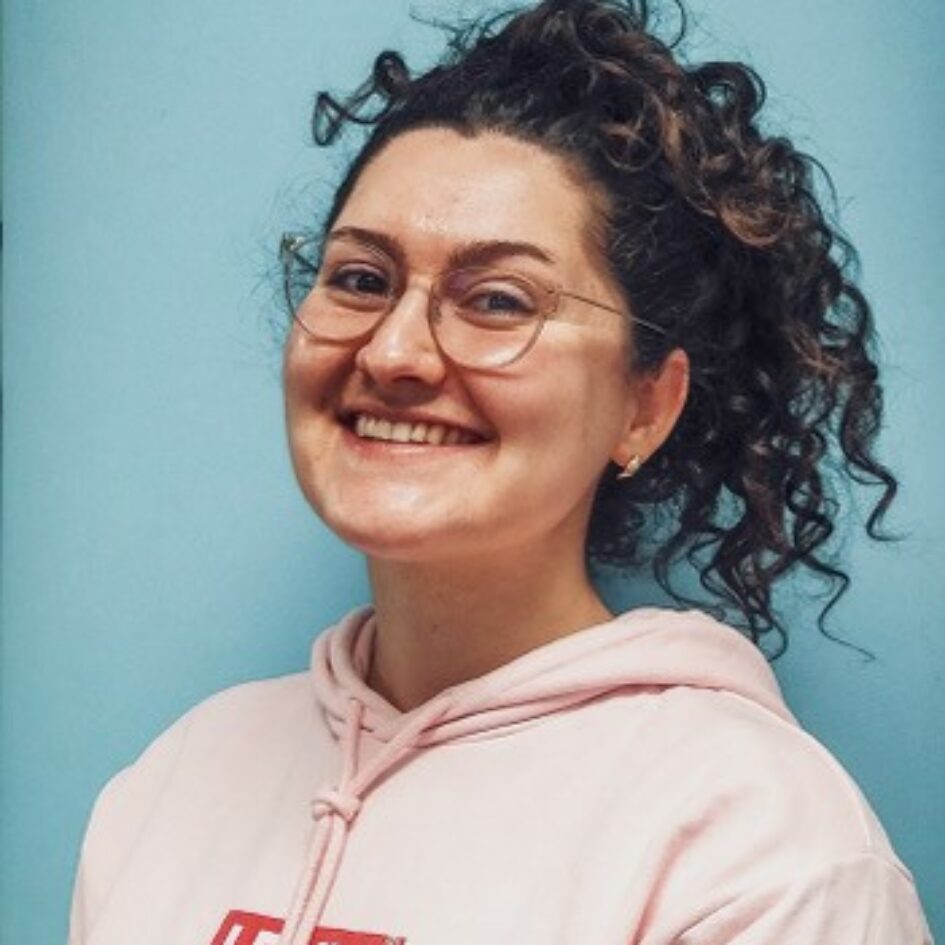
Jasmine Ghoreishi
Jasmine Ghoreishi, fascinated by animation, has always wanted to tell stories through her passion for artistic disciplines. She is now Senior Animator at Framestore.
A look back at your esma years
WHAT WAS YOUR BACKGROUND BEFORE COMING TO ESMA? AND YOUR PATH TO ESMA?
Growing up wanting to become an artist scared my parents a little, who insisted that I take a normal BAC ES rather than a BAC in applied art. But when I graduated I still wanted to go into the arts. So I decided to do a MANAA (at the time it still existed) in Lyon, which enabled me to discover all different types of art (architecture, textiles, computer graphics, nude drawing, etc.).
I’d always been fascinated by animation in general, but 2D animation seemed a more closed career choice than CG animation. So I did my research and came across ESMA Montpellier, to which I applied, “and the rest is history” (sic).

WHAT WAS YOUR CAREER PATH AT ESMA?
At the time, ESMA offered a 3-year curriculum. It was an extremely intense program. I’d never really spent any time at a computer. From the very first classes in animation, modeling, compositing, etc., I doubted my ability to follow so many technical courses and so many screens. But I got the hang of it very quickly. That’s the reality of CG animation. I’d always wanted to tell stories, to make films like Disney or Pixar. If being in front of a computer most of the time made that dream come true, “so be it! Just hang in there and adapt! A 3-year Masters program isn’t easy every day.
The teachers I had back then must have come a long way since then. They were former professionals who had become professors. They could give us real accounts of their experiences for our own future in the professional world. But that’s where the difference lies. A professional “teacher” would address a student as he or she would a colleague or subordinate. They were like supervisors who expected the best results from their teams. I saw that the campus had moved and expanded! How fortunate! At the time, this intense environment brought us students even closer together.

In our final year at ESMA, we spent a lot of time together. We helped each other to finish our films, to stay motivated, to keep our heads held high. Of course, it wasn’t all rosy, but it enabled all of us to enter the professional world quickly and be ready for anything.
HOW DO YOU FEEL ABOUT YOUR STUDIES?
Studying at ESMA taught me how to work efficiently, quickly and hard. To develop my artistic skills and to work as part of a team to create the best results. I left the school hungry for knowledge and experience.
Your career path
WHAT WAS YOUR PROFESSIONAL IMMERSION LIKE AFTER GRADUATING FROM ESMA?
At the end of the course, we had to present our end-of-year film (I worked on the film La Vague, and was mainly involved in the film’s chara design, storyboard and animation) to a jury made up of recruiters from various companies (film, advertising, video games, etc.). We had the opportunity to interview some of them.
That day, I had an interview with an English company, The Mill, based in London. A month later, after finishing ESMA, I was able to move to London, where I still live 7 years later!

Entering the professional world after graduating from ESMA was quite stressful at first, especially when you add to that moving alone to a new country far from family where everything is done in another language (I’m bilingual, so no problem there) but very quickly I was able to adapt thanks to the skills I’d built up during my time at school.
Working as a professional wasn’t that different from being at ESMA. On the contrary, it was even more pleasant and fluid. You’re surrounded by colleagues who love their work, supervisors who have nothing but clear, motivating feedback, geeks who are all in the same boat, capsizing and bonding a team before the final deadline. Afterwards, we all go to the pub together to unwind from the day.
WHAT DOES YOUR JOB INVOLVE AND WHAT DO YOU LIKE ABOUT IT?
I specialize in animation (bringing characters, objects and animals to life). I’ve always been fascinated by movement, anatomy, the human body, how things move and so on. Being an animator is like being an actor but behind a computer. You give an actor’s performance through a virtual puppet.
To become an animator, you need to be passionate about movement, acting and magic, and to want to tell stories and take the spectator on a journey through different worlds and eras. You need attention to detail, and the ability (sic) to give soul and emotion to a virtual puppet and make it believable. Even though I specialized in Animation, studying at ESMA gave me an insight into all the stages of film production, so I can also talk to other departments in the company and understand what’s going on.

TELL US ABOUT THE DIFFERENT PROJECTS YOU’VE WORKED ON AT THE VARIOUS STUDIOS YOU’VE WORKED AT?
After spending almost two years at The Mill as a Junior (advertising and music videos, etc.), I went to work at a film studio, Framestore, also in London, a company I’m still with 5 years later, now as Senior Animator (and hopefully as Lead Animator in the next 5 years).
In the advertising world, projects are shorter and the tempo is much faster than in film. There’s never a dull moment, you’re always changing teams and meeting new colleagues – it’s great! I was able to use my qualities of efficiency and working fast under pressure to meet deadlines on time and create a portfolio quickly. When I switched from advertising to film, I was able to slow down the pace and really develop a critical eye and patience over the long term (an advertising project takes between 2 and 5 months and then you move on; a film project can take from 5 months to 2 years or even more). Long-term work requires an enormous effort in communication between colleagues and departments, and a much more precise attention to detail than in advertising. But the results are worth it, especially when you see your name in the credits on the big screen!
Since 2017, when I started at Framestore, I’ve been able to choose different projects that represented a new challenge for me. New skills to develop on each film.
Paddington 2 was the first film I contributed to, and it’s my favorite project to date.
Then I was able to animate Detective Pikachu a Pokemon Movie, Lady and the Tramp, His Dark Materials series, Tom & Jerry Movie, Guardians of the Galaxy vol.3, and finally Disney’s The Little Mermaid.
Projects of different styles/genres with protagonists of different species, making my portfolio interesting and diverse.

To conclude
ADVICE FOR FUTURE STUDENTS…
It’s a world where you have to adapt. And quickly! Teams change, tools change, the approach to animation changes, the film director keeps changing his mind so we have to start the shot over again, the company changes so we have to change the pipeline, etc. It’s a fast-moving world. You’ve got to hang on, but it’s worth it! At least you don’t get bored! The world will always need advertising, stories to tell, films to share, video games to create. The world needs artists of all kinds! Best of all, you get to work with ESMA alumni, because in addition to working on the same projects, you share a stronger bond having followed the same training.






